Understanding Minutes
In the context of time, a minute is a unit of measurement equal to 60 seconds. It is a fundamental unit of time and is used in various everyday activities such as scheduling, sports, cooking, and more. Understanding minutes is important for tasks such as time management, calculating durations, and working with schedules.
Key Concepts
- Definition: A minute is a unit of time equal to 60 seconds.
- Conversion: 1 minute = 60 seconds
- Notation: Minutes are commonly denoted using the abbreviation "min."
- Relationship to Hours: There are 60 minutes in 1 hour.
Study Guide
To master the concept of minutes, you can follow these steps:
- Understanding the Definition: Make sure you understand that a minute is a specific unit of time equal to 60 seconds. You can use a clock or a stopwatch to visualize and count the seconds within a minute.
- Conversion Practice: Practice converting minutes to seconds and vice versa. For example, calculate how many seconds are in 5 minutes, or how many minutes are in 300 seconds.
- Real-life Application: Look for real-life examples where minutes are used, such as in sports events, cooking times, or classroom activities. This will help you understand the practical significance of minutes in everyday scenarios.
- Timekeeping Skills: Practice reading and interpreting time using minutes on analog and digital clocks. This will help you become proficient in reading and understanding time in minutes.
By understanding the key concepts and following the study guide, you can develop a solid grasp of minutes and their significance in time measurement.
Remember, mastering the concept of minutes is essential for everyday time management and various academic and practical activities.
.◂Math Worksheets and Study Guides Fourth Grade. Lines and Angles
Study Guide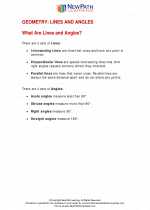 Lines and Angles
Lines and Angles  Study Guide
Study Guide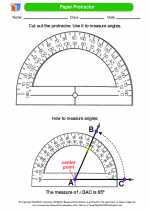 Paper Protractor
Paper Protractor  Activity Lesson
Activity Lesson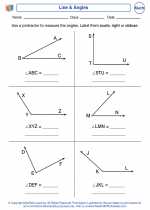 Line & Angles
Line & Angles  Worksheet/Answer key
Worksheet/Answer key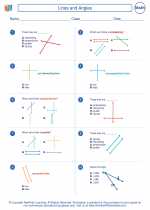 Lines and Angles
Lines and Angles  Worksheet/Answer key
Worksheet/Answer key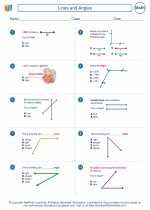 Lines and Angles
Lines and Angles  Worksheet/Answer key
Worksheet/Answer key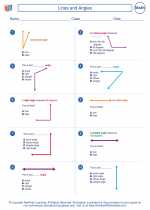 Lines and Angles
Lines and Angles  Worksheet/Answer key
Worksheet/Answer key Lines and Angles
Lines and Angles  Worksheet/Answer key
Worksheet/Answer key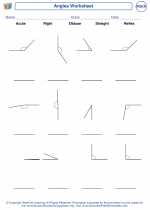 Angles
Angles  Worksheet/Answer key
Worksheet/Answer key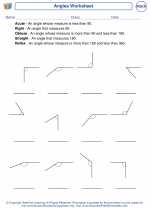 Angles
Angles  Worksheet/Answer key
Worksheet/Answer key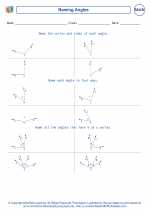 Naming Angles
Naming Angles  Worksheet/Answer key
Worksheet/Answer key Identifying Parallel Lines
Identifying Parallel Lines  Worksheet/Answer key
Worksheet/Answer key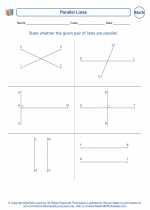 Identifying Parallel Lines
Identifying Parallel Lines  Worksheet/Answer key
Worksheet/Answer key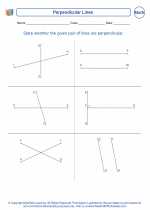 Identifying Perpendicular Lines
Identifying Perpendicular Lines  Worksheet/Answer key
Worksheet/Answer key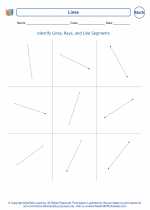 Lines
Lines  Worksheet/Answer key
Worksheet/Answer key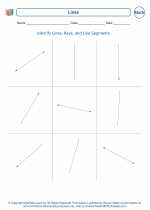 Lines
Lines  Vocabulary/Answer key
Vocabulary/Answer key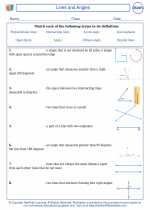 Lines and Angles
Lines and Angles  Vocabulary/Answer key
Vocabulary/Answer key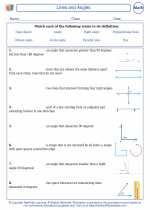 Lines and Angles
Lines and Angles 

 Study Guide
Study Guide
 Activity Lesson
Activity Lesson
 Worksheet/Answer key
Worksheet/Answer key
 Worksheet/Answer key
Worksheet/Answer key
 Worksheet/Answer key
Worksheet/Answer key
 Worksheet/Answer key
Worksheet/Answer key
 Worksheet/Answer key
Worksheet/Answer key
 Worksheet/Answer key
Worksheet/Answer key
 Worksheet/Answer key
Worksheet/Answer key
 Worksheet/Answer key
Worksheet/Answer key
 Worksheet/Answer key
Worksheet/Answer key
 Worksheet/Answer key
Worksheet/Answer key
 Worksheet/Answer key
Worksheet/Answer key
 Worksheet/Answer key
Worksheet/Answer key
 Vocabulary/Answer key
Vocabulary/Answer key
 Vocabulary/Answer key
Vocabulary/Answer key

The resources above cover the following skills:
Geometry (NCTM)
Analyze characteristics and properties of two- and three-dimensional geometric shapes and develop mathematical arguments about geometric relationships.
Identify, compare, and analyze attributes of two- and three-dimensional shapes and develop vocabulary to describe the attributes.
Connections to the Grade 4 Focal Points (NCTM)
Measurement: As part of understanding two-dimensional shapes, students measure and classify angles.